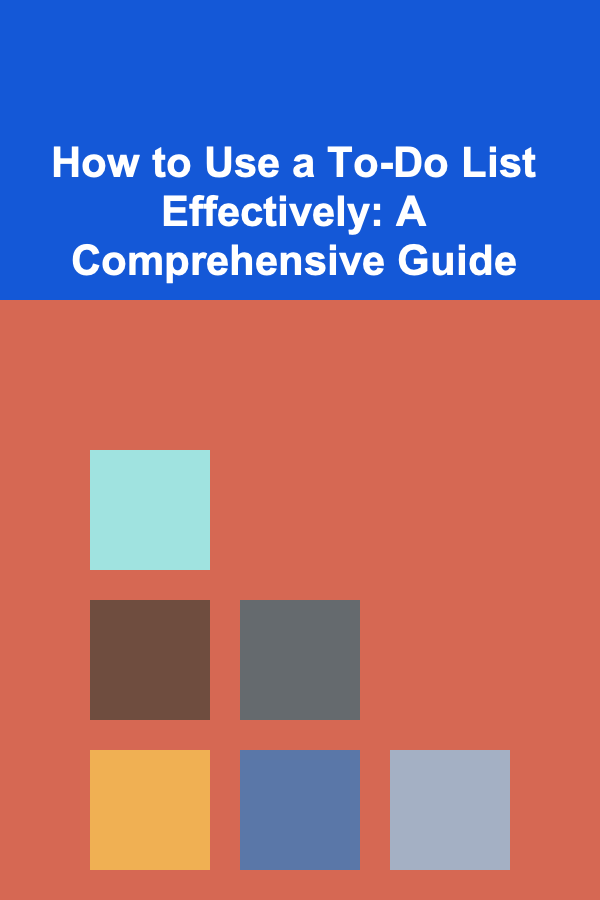
How to Overcome Common Challenges in Using a Home Budget App
ebook include PDF & Audio bundle (Micro Guide)
$12.99$11.99
Limited Time Offer! Order within the next:

Managing personal finances is an essential skill for achieving financial stability and reaching long-term goals. In recent years, home budget apps have gained popularity as tools that can help individuals and families track their income and expenses, set savings goals, and gain better insights into their financial habits. However, while these apps offer numerous benefits, users often encounter common challenges that can impede their effectiveness. This comprehensive guide will explore how to overcome these challenges, ensuring you make the most of your home budget app.
Understanding the Benefits of Home Budget Apps
Before diving into the challenges associated with using home budget apps, it's important to recognize their advantages:
1.1. Simplified Tracking
Budget apps streamline the process of tracking expenses and income, allowing users to input data easily and access reports at their fingertips.
1.2. Real-Time Insights
Most apps provide real-time data on spending habits, helping users identify patterns and make informed decisions about their finances.
1.3. Goal Setting and Planning
Many budgeting apps allow users to set financial goals such as saving for a vacation or paying off debt, providing motivation and direction.
1.4. Automation
With features like automatic transaction syncing and reminders, budgeting apps reduce the manual effort required to maintain accurate records.
Despite these advantages, users may face several challenges when using these applications effectively.
Challenge 1: Choosing the Right App
One of the first hurdles users encounter is selecting the right budgeting app that aligns with their needs and preferences.
2.1. Evaluate Your Needs
Before making a choice, assess what functionality you need from a budgeting app. Consider the following factors:
- Type of Budgeting: Do you prefer zero-based budgeting, envelope systems, or traditional budgeting methods?
- Feature Set: Are you looking for expense tracking, goal setting, debt management, or investment tracking?
- User Experience: Do you prefer a simple interface or one with more advanced features?
2.2. Research Options
Look into various budget apps available on the market. Some popular options include:
- Mint: A free app that offers budgeting, expense tracking, and credit score monitoring.
- YNAB (You Need A Budget): A subscription-based app focused on proactive budgeting and financial education.
- EveryDollar: A user-friendly app for zero-based budgeting created by financial expert Dave Ramsey.
- PocketGuard: Tracks spending and shows how much disposable income remains after bills and goals.
2.3. Read Reviews
Check reviews and ratings on app stores or finance blogs to gauge other users' experiences. Look for feedback regarding usability, customer support, and reliability.
2.4. Test Multiple Apps
Many budgeting apps offer free versions or trial periods. Take advantage of these opportunities to test different apps and determine which one feels most intuitive and meets your requirements.
2.5. Seek Recommendations
Ask friends or family members for recommendations based on their experiences with particular budgeting apps. Their insights can be invaluable.
Challenge 2: Technical Issues and Learning Curves
Once you've chosen a home budget app, you may encounter technical difficulties or a steep learning curve.
3.1. Familiarize Yourself with the App
Take time to explore the app's interface and familiarize yourself with its features. Here are some practical steps to ease the learning process:
- Onboarding Tutorials: Many apps provide tutorials upon first use. Pay attention to these guides to understand basic functionalities.
- Help Center: Utilize the app's support resources or FAQ sections for guidance on specific features.
- Online Communities: Join forums or social media groups dedicated to discussing budgeting apps. These communities may offer tips and solutions to common issues.
3.2. Patience is Key
Adjusting to a new app can take time. Be patient as you learn and practice using its features. Establish realistic expectations for mastering the app within a few weeks rather than days.
3.3. Troubleshooting Technical Issues
If you experience technical issues, consider these steps:
- Update the App: Ensure you are using the latest version of the app, as updates often resolve bugs and improve performance.
- Reinstall if Necessary: If problems persist, uninstalling and reinstalling the app can sometimes resolve glitches.
- Contact Support: If you encounter persistent issues, reach out to the app's customer support team for assistance.
Challenge 3: Consistency in Data Entry
One of the primary challenges users face in utilizing budget apps effectively is maintaining consistency in data entry.
4.1. Set Regular Reminders
To establish a routine, set daily or weekly reminders to log expenses and review your budget. Consistency is crucial for accurate tracking, and reminders can help reinforce this habit.
4.2. Make It Convenient
Choose methods for entering data that fit seamlessly into your daily routine. Options may include:
- Mobile Access: Use the app on your smartphone for easy access while you're out and about.
- Receipt Scanning: Some budget apps allow you to scan receipts, simplifying the data entry process.
- Link Bank Accounts: Many apps enable automatic syncing with your bank accounts, reducing the need for manual entries.
4.3. Create Categories
Set up categories for your expenses (e.g., groceries, entertainment, transportation) to make it easier to classify transactions. Having a clear categorization system encourages consistent data entry.
4.4. Review Regularly
Schedule regular reviews of your budget---weekly or monthly---to ensure your entries are complete. This practice not only keeps you accountable but also allows for adjustments based on spending behavior.
Challenge 4: Staying Motivated
Maintaining motivation to stick to a budget is another common hurdle users encounter when managing their finances through an app.
5.1. Set Clear Financial Goals
Establish specific, measurable, achievable, relevant, and time-bound (SMART) financial goals. Whether it's saving for a down payment, paying off debt, or building an emergency fund, having tangible targets can motivate you to stay engaged with your budget.
5.2. Celebrate Milestones
Acknowledge and celebrate achievements along the way, no matter how small. For example, if you successfully reduce discretionary spending in a month or reach a savings milestone, reward yourself with a small treat or outing.
5.3. Find Accountability
Share your financial goals with a trusted friend or family member who can encourage and hold you accountable. Regular check-ins can help keep you motivated and committed.
5.4. Evaluate Progress
Regularly assess your progress toward goals. Reflecting on your achievements and recognizing areas for improvement can reignite your motivation.
Challenge 5: Understanding Reports and Analytics
Home budget apps often provide various reports and analytics, but understanding how to interpret them can be challenging.
6.1. Learn the Metrics
Familiarize yourself with key metrics provided by your app, such as:
- Spending Categories: Understand where your money is going by reviewing categorized expenses.
- Trends Over Time: Look for trends in your spending patterns, which can uncover areas for potential savings.
- Net Income: Track your income minus expenses to see if you are living within your means.
6.2. Utilize Reporting Features
Take advantage of any reporting features offered by the app:
- Monthly Summaries: Review summaries to gauge your financial health over each month.
- Goal Progress Reports: Monitor how close you are to meeting savings goals or debt repayment milestones.
6.3. Seek Educational Resources
Many budgeting apps provide educational resources, including articles, videos, or webinars, that can help you understand how to interpret financial data effectively. Engage with these materials to enhance your financial literacy.
Challenge 6: Managing Emotional Spending
Emotions can significantly influence spending habits, leading to unplanned purchases that derail budgeting efforts.
7.1. Recognize Emotional Triggers
Identify emotional triggers that prompt impulsive spending. Common triggers may include stress, boredom, sadness, or even celebration. By recognizing these triggers, you can develop strategies to mitigate their impact.
7.2. Implement Mindful Spending Practices
Practice mindfulness before making a purchase:
- Pause Before Buying: Adopt a "cooling-off" period before making impulse purchases. Wait 24 hours to assess whether the desire to buy persists.
- Reflect on Necessity: Ask yourself whether the purchase aligns with your values and financial goals.
7.3. Explore Alternative Coping Strategies
Instead of turning to shopping as a coping mechanism, explore healthier alternatives:
- Exercise: Engage in physical activities such as walking, yoga, or dancing to release stress.
- Hobbies: Pursue hobbies or creative activities that distract you from spending urges.
- Social Connections: Spend time with friends or family to foster positive emotions without resorting to shopping.
Challenge 7: Integrating Budgeting into Your Lifestyle
Successfully using a home budget app involves integrating budgeting practices into your daily lifestyle.
8.1. Align Budgeting with Values
Consider your core values and how they relate to your spending. For instance, if traveling is a priority for you, allocate funds toward travel within your budget. Aligning your budget with your values can increase commitment to budgeting.
8.2. Adjust Your Mindset
Adopt a positive mindset toward budgeting. Instead of viewing budgeting as a restrictive chore, frame it as a tool for empowerment and freedom. Emphasize the benefits of improved financial control and security.
8.3. Involve Family Members
If managing household finances, include family members in the budgeting process. Discuss shared financial goals, set collective priorities, and encourage everyone to participate in tracking expenses.
8.4. Practice Flexibility
Life circumstances change, and so should your budget. Allow yourself the flexibility to adjust your budget and spending habits as needed. Regularly revisit your financial situation and adapt accordingly.
Challenge 8: Handling Unexpected Expenses
Unexpected expenses can disrupt budgets and create financial strain.
9.1. Build an Emergency Fund
Create an emergency fund to cover unforeseen costs without derailing your budget. Aim to save three to six months' worth of living expenses in a separate account. Start small, contributing regularly until you reach your target.
9.2. Factor in Contingencies
When creating your budget, allocate a percentage of your income for unexpected expenses. Designate this amount as a miscellaneous or contingency fund to handle surprises.
9.3. Reassess Budget After Emergencies
After encountering unexpected expenses, reassess your budget to accommodate any changes in income or necessary adjustments. This review helps maintain clarity and ensures you remain on track with your financial goals.
Conclusion
Using a home budget app can transform your financial management and empower you to take control of your finances. While challenges may arise, overcoming these obstacles is achievable with the right strategies and mindset.
By selecting the appropriate app, committing to consistent data entry, and developing healthy financial habits, you can navigate the complexities of budgeting effectively. Remember to stay flexible, seek support when needed, and prioritize aligning your budget with your values and goals.
In conclusion, embracing the journey of budgeting requires dedication and resilience. With persistence, you can cultivate a sustainable financial lifestyle that leads to greater confidence, reduced stress, and long-term prosperity.

How to Create a Digital Inventory of Office Supplies
Read More
How to Maintain Your Home's Gutters and Downspouts
Read More
How to Set Up a Baby Sleep Routine with the Right Essentials
Read More
Unlocking Insights: Essential Skills for the Modern Research Analyst
Read More
How to Photograph Birds: A Beginner's Guide
Read More
How to Use a To-Do List Effectively: A Comprehensive Guide
Read MoreOther Products

How to Create a Digital Inventory of Office Supplies
Read More
How to Maintain Your Home's Gutters and Downspouts
Read More
How to Set Up a Baby Sleep Routine with the Right Essentials
Read More
Unlocking Insights: Essential Skills for the Modern Research Analyst
Read More
How to Photograph Birds: A Beginner's Guide
Read More